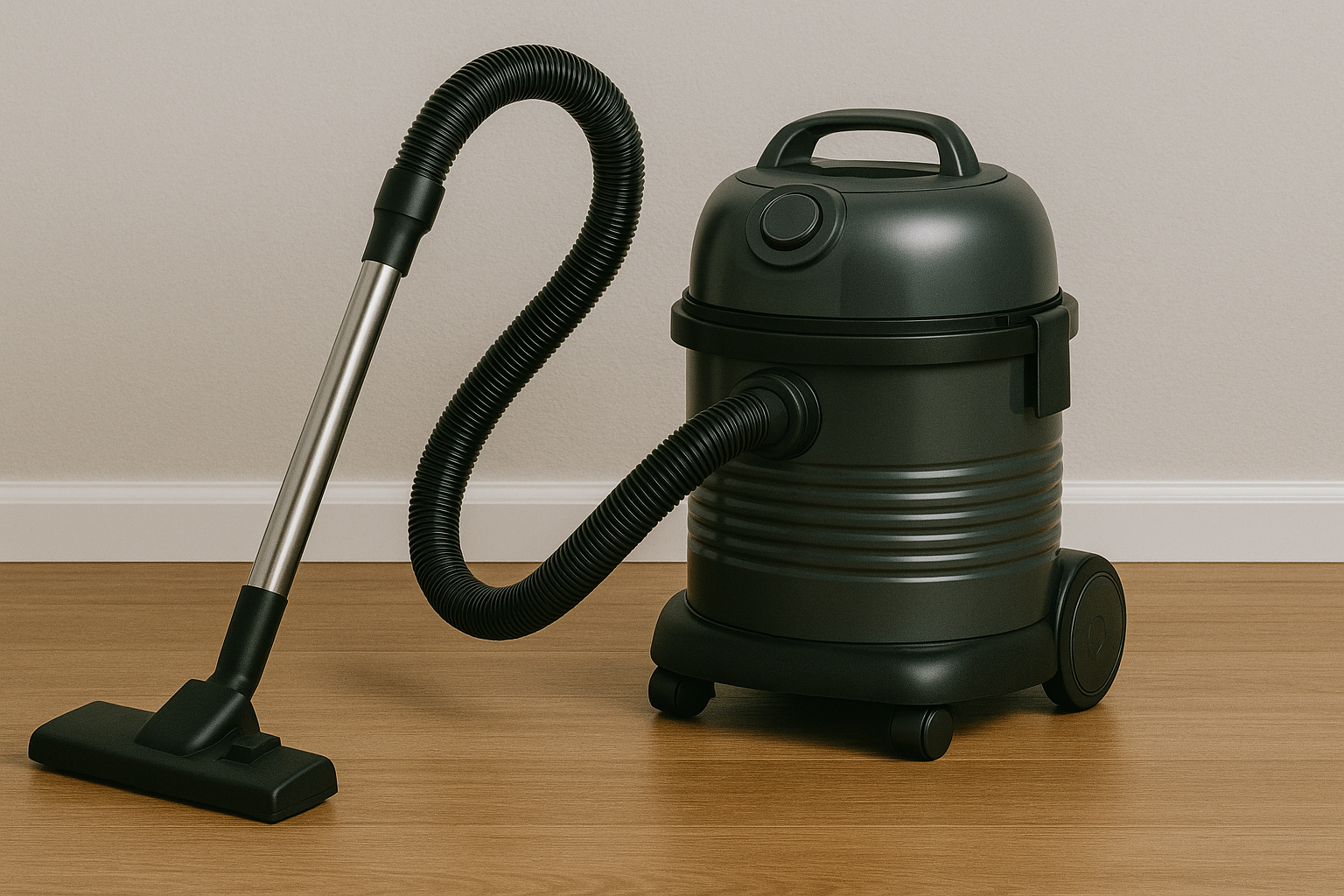The commercial cleaning industry is experiencing a seismic shift from traditional product ownership to service-based models. One of the most notable innovations is Vacuum-as-a-Service (VaaS), where B2B buyers pay for access, performance, and service rather than outright ownership. For vacuum brands targeting Europe and the Middle East, the VaaS model offers opportunities to generate recurring revenue, strengthen client relationships, and differentiate from low-cost competitors.
In this article, we explore how VaaS will evolve in the next five years, what benefits and challenges it brings, and how product categories like the High Suction Vacuum Cleaner, Quiet Vacuum Cleaner, and Cordless Handheld Vacuum Cleaner fit into subscription-based ecosystems.
🌐 Why the Shift Toward Subscription Models?
Several forces are driving adoption of subscription models in the vacuum industry:
Operational Budgets vs. Capital Expenditure: Many facility managers prefer predictable monthly payments instead of large upfront investments in a Multi-Functional Durable Vacuum Cleaner fleet.
Technology Obsolescence: As innovations in IoT and robotics accelerate, buyers avoid ownership risk by subscribing to solutions like a 4 in 1 Cordless Smart Wet & Dry Vacuum Cleaner.
Sustainability Pressure: Subscription models often include recycling, refurbishment, and responsible disposal of old units.
These shifts align with broader “everything-as-a-service” trends across industries.
📊 Benefits of VaaS for B2B Buyers
Flexibility: Businesses can scale cleaning capacity up or down as needed, swapping a Fast Lightweight Vacuum Cleaner for a Large-Capacity Wet Dry Vacuum Cleaner depending on demand.
Reduced Risk: If a Cordless Vacuum Cleaner malfunctions, service agreements ensure immediate replacement, minimizing downtime.
Cost Transparency: Subscription plans include maintenance and parts, helping procurement managers forecast budgets more accurately.
Access to Innovation: Clients gain access to the latest models, from Energy-Saving Efficient Powerful Vacuum Cleaner to IoT-enabled fleets.
⚖️ Benefits for Vacuum Brands
For brands, VaaS creates sustainable, recurring revenue streams and long-term client relationships. Additional advantages include:
Data Insights: Usage data from Portable Self-Cleaning Vacuum Cleaner units can improve product design and predictive maintenance.
Client Loyalty: Service-heavy models reduce churn and create switching costs for clients.
Upsell Opportunities: Brands can bundle consumables, upgrades, or analytics services into higher-tier subscriptions.
🚩 Challenges in Implementing VaaS
Despite the benefits, VaaS adoption faces barriers:
Cultural Resistance: Some buyers still prefer owning a Car Vacuum Cleaner fleet outright.
Financial Risks: Brands carry the upfront cost of equipment, requiring strong financing models.
Operational Complexity: Managing maintenance across a dispersed fleet of Wet Dry Vacuum Cleaners requires logistics and technical infrastructure.
Regulatory Uncertainty: Local laws in Europe and the Middle East may affect how service contracts are structured.
🛠️ Structuring Tiered VaaS Packages
To succeed, brands must design clear tiers of subscription services:
Basic Plan
Limited to standard units like Cordless Handheld Vacuum Cleaner.
Includes basic maintenance.
Suitable for small offices or distributors testing the model.
Standard Plan
Covers mid-range products like the Multi-Functional Durable Vacuum Cleaner.
Preventive maintenance and spare parts included.
24/7 support for high-traffic environments like shopping malls.
Premium Plan
Includes smart devices like the 4 in 1 Cordless Smart Wet & Dry Vacuum Cleaner.
Predictive maintenance, IoT monitoring, and replacement guarantees.
Tailored for large-scale facilities such as hospitals or airports.
🌍 Regional Adoption Trends
Europe: Sustainability and compliance will drive adoption. Eco-friendly units like the Energy-Saving Efficient Powerful Vacuum Cleaner will be bundled with recycling and carbon reporting services.
Middle East: Rapid infrastructure growth and outsourcing trends will accelerate uptake. Large projects may subscribe to fleets of Large-Capacity Wet Dry Vacuum Cleaner models for flexibility.
Regional customization of service tiers will be crucial for global brands.
📈 VaaS in the Next 5 Years
Looking ahead, several trends will shape the VaaS landscape:
IoT Integration: Data-driven optimization of vacuum fleets.
AI-Enabled Service Models: Predictive maintenance reduces downtime and costs.
Flexible Financing: Partnerships with banks and fintechs will ease upfront equipment costs.
Market Consolidation: Larger players may acquire smaller startups pioneering VaaS.
Customer Experience as a Differentiator: Premium SLAs and personalized dashboards will separate leaders from laggards.
By 2028, analysts expect VaaS to become mainstream in commercial cleaning contracts.
🏆 Conclusion
Vacuum-as-a-Service represents a fundamental evolution in how B2B buyers and brands approach commercial cleaning. For clients, it provides flexibility, risk reduction, and cost predictability. For brands, it enables recurring revenue, loyalty, and innovation opportunities.
Over the next five years, the success of VaaS will depend on tailored tier structures, robust financing, and integration with IoT ecosystems. Brands that align subscription models with local regulations and buyer expectations will capture the most value, whether deploying a High Suction Vacuum Cleaner, a Quiet Vacuum Cleaner, or advanced 4 in 1 Cordless Smart Wet & Dry Vacuum Cleaner solutions.
📌 Suitable Audience
Vacuum cleaner distributors, facility managers, procurement officers, and industry entrepreneurs in Europe and the Middle East.
📌
#HighSuctionVacuumCleaner, #QuietVacuumCleaner, #PortableSelfCleaningVacuumCleaner, #MultiFunctionalDurableVacuumCleaner, #FastLightweightVacuumCleaner, #EnergySavingEfficientPowerfulVacuumCleaner, #LargeCapacityWetDryVacuumCleaner, #CordlessHandheldVacuumCleaner, #WetDryVacuumCleaners, #4in1CordlessSmartWetDryVacuumCleaner, #CordlessVacuumCleaner, #CarVacuumCleaner, #VacuumAsAService, #CleaningSubscription, #RecurringRevenue, #FacilityManagement, #CommercialCleaningTrends, #SmartVacuumServices, #IoTVacuum, #AIEnabledMaintenance, #EquipmentAsAService, #SubscriptionEconomy, #SustainableCleaning, #GreenFacilities, #MiddleEastFacilities, #EuropeSustainability, #VacuumFleetManagement, #PredictiveMaintenance, #SmartBuildingTech, #ProcurementInnovation, #OperationalEfficiency, #VacuumSLAs, #CustomerExperience, #FintechPartnerships, #FlexibleFinancing, #CommercialVacuumInnovation, #VacuumIndustryTrends, #GlobalCleaningMarket, #B2BVacuumSolutions, #SmartApplianceMarket, #EnergyEfficientCleaning, #VacuumBrandStrategy, #CleaningTechFuture, #B2BSubscriptions, #VacuumStartupGrowth, #NextGenCleaning📌

















